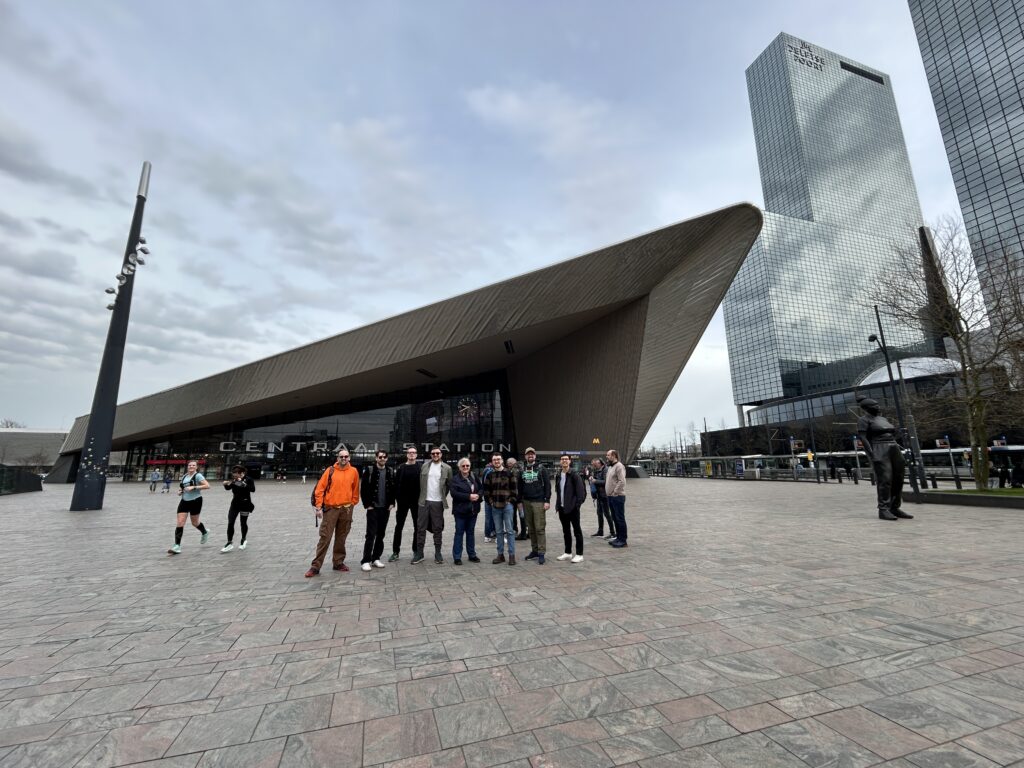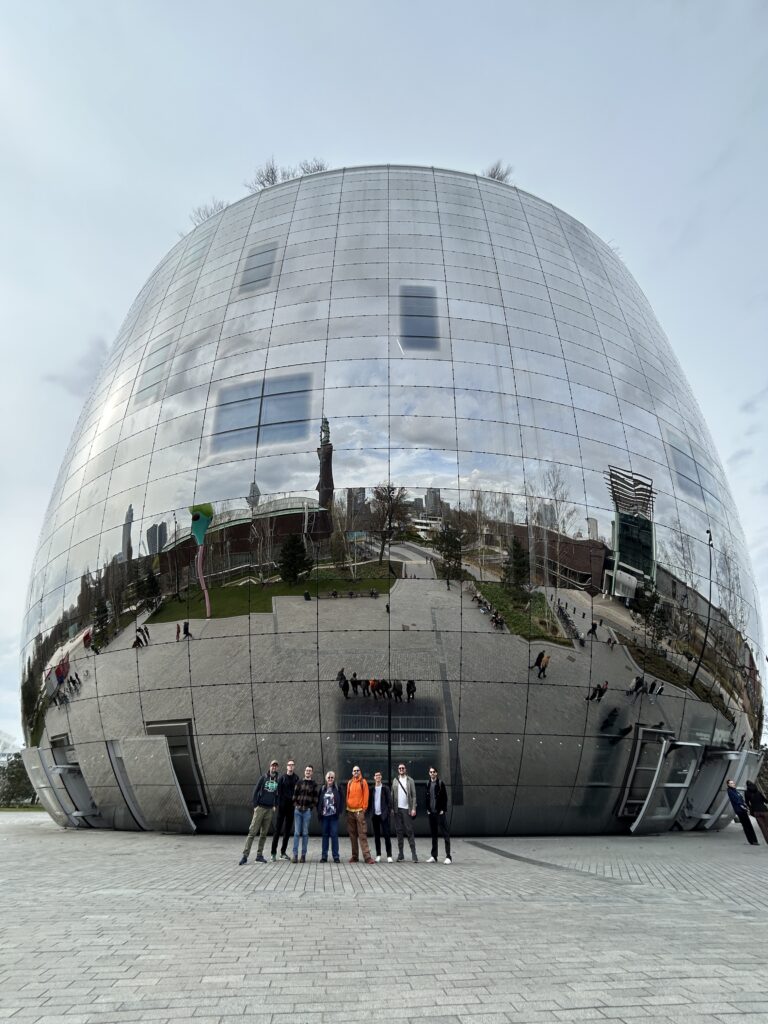An Architectural Weekend in Rotterdam
Posted by Jack Young
Last month, I visited Rotterdam with colleagues on a weekend break with some architectural exploring. It’s a city known for its distinctive post-war architecture and mix of styles, and walking its streets offered a clear contrast to the more uniform built environment we’re used to in the UK.
Rotterdam’s cityscape offers a wide mix of architectural styles, reflecting a culture of experimentation and change. From the gravity-defying Cube Houses by Piet Blom to the cavernous Markthal with its technicolour mural sweeping across its interior, the city celebrates innovation. Even standard residential and commercial blocks experiment with form, façade treatments, and spatial relationships.

The city’s attitude towards design is anything but shy. Structures compete for attention, but somehow it works.
By contrast, the UK’s architectural language often leans toward the safe and familiar. Cities like London, Manchester, and Birmingham do offer moments of architectural juxtaposition – where Georgian townhouses sit beside postmodern towers, and Brutalist monoliths clash with sleek glassy façades. Even Norwich, on a more modest scale, demonstrates bold thinking through buildings like The Forum, which successfully pairs a sweeping contemporary form with its historic surroundings. But while these examples exist, they often feel like exceptions rather than the rule. The wider architectural landscape tends to prioritise consistency, contextualism, and risk aversion. There seems to be a cultural preference for buildings that blend in, not stand out – a stark contrast from the freedom seen in Rotterdam.

Why Such Divergence?
A significant factor could be the planning system. In the UK, planning policies tend to favour contextualism and ‘fitting in’. Local plans and design guides are often structured around preserving ‘character’, which, while valuable, can become a barrier to innovation. ‘Unconventional’ designs can be seen as risky and clients may have to invest a lot of time and resources into challenging convention.
In the Netherlands, and Rotterdam in particular, planning tends to be more flexible and design-led. Post-war reconstruction after the 1940 Blitz left the city with a blank slate – enabling planners and architects to embrace radical new ideas without the constraints of conforming to a centuries-old urban fabric. Since then, the planning ethos has encouraged innovation – welcoming architectural competitions, international designers, and experimental urban forms.

The UK did embrace bold design thinking during the post-war period, producing an era of architectural idealism – Park Hill in Sheffield and the Barbican in London are examples of this. These schemes were ambitious, future-focused, and often unapologetically modern. But that era is now looked back on with mixed feelings. Many of its buildings were poorly maintained, became socially stigmatised, or simply failed to live up to their utopian aims. As a result, much of the British public grew wary of architectural experimentation. Boldness became associated with failure, and conservatism with safety. That cultural hangover could still linger today.
Our trip demonstrated there’s room for boldness within sensitivity, and originality within context. Rotterdam doesn’t disregard history – it simply refuses to be bound by it. That, perhaps, is a lesson worth bringing home.

